#foma
Text

Danse
127 notes
·
View notes
Text
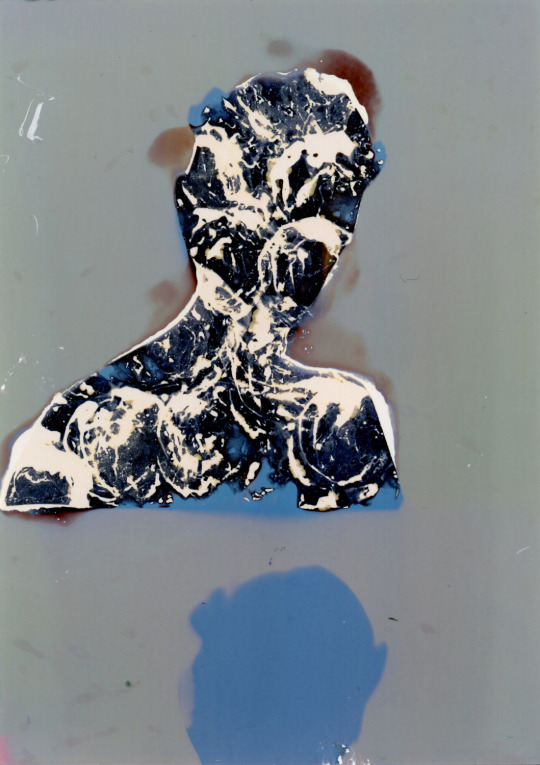

{2023} chemigram/lumen trials
#art#anna malina#artists on tumblr#selfportraits#original art#chemigram#lumen print#silhouettes#circles#blue#colour#foma#2023#fomaspeed
108 notes
·
View notes
Text

Madonna of the front porch
Taken from the car while driving by. Diana Mini on Foma 200 B&W film.
#photographers on tumblr#original photographers#film photography#black and white#film is alive#i still shoot film#analog photography#madonna#front porch#countryside#rural#monochrome#Diana Mini#Foma#toy camera#small town
101 notes
·
View notes
Text

STREET MUSICIAN
One of my first works using the solarization technique in a photographic darkroom (around 2004)
I remember: Nikon F801 camera / ISO50 Foma B&W film / Agfa photo paper / photographic enlarger Schneider Kreuznach
#photographers on tumblr#elloon#photography#jackie branc photographer#black and white#photographer#black and white photography#urban#urban photography#solarization#Nikon F100#Foma#Agfa#Schneider Kreuznach#darkroom
12 notes
·
View notes
Video
Toyo 45A: Lille kirsebærtræ på en diset dag by Lars Holte
Via Flickr:
Small cherry tree on a misty day Camera: Toyo Field 45A Lens: Rodenstock Sironar-N 150mm f:5.6 (yellowgreen filter) Exposure: 1/15 @ F/32 Film: Foma Fomapan 400 Action 4x5" hand developed in Xtol Replenished
#Toyo#Field#ToyoField#45A#Rodenstock#Sironar-N#150mm#f:5.6#4x5#Foma#Fomapan400Action#320iso#largeformat#film#Kodak#Xtol#analog#analogue#blackandwhite#ishootfilm#filmism#ClassicBlack&White#monochrome#filmforever#filmphotography#ReveniLabs#SpotMeter#Lars Holte#home processing#Denmark
8 notes
·
View notes
Text

Corse. Punta Bianca (2014)
Rolleiflex Schneider Xenar
Fomapan 100
#6x6#moyen format#medium format#rolleiflex#black and white#seascape#corse#analog#bw#noir et blanc#film#fomapan#foma#sea
61 notes
·
View notes
Text

oh and! i fixed my Argus C3 Matchmatic (1959) rangefinder, so now I can do flashbulbs and stuff. I love this strange machine and it feels nothing at all, anyway here's a spent flashbulb in the dinged-in-air-transit original flashgun
Argus C3 Matchmatic, Coated Cintar 50mm f/3.5, Fomapan 100
#photographers on tumblr#35mm#lensblr#photography#original art#black and white#original photographers#bnw#black and white photography#black & white#black & white photography#argus#35mm black and white#foma
9 notes
·
View notes
Text

glow
#analog#analogue#35mm photography#35mm film#black and white#film photography#photographers on tumblr#original photographers#foma#fomapan 400#echt-analog#film never dies#buy film not megapixels#2022
7 notes
·
View notes
Text

Nahverkehr...
#analog#Film#RB33#Königsbrück#Hermsdorf#Ottendorf-Okrilla#Dresden#Fahrrad#Bicycle#bicycle touring#commute#commuting#BR642#Desiro#ortlieb gravel pack#Foma#Fomapan#100#konica z-up 70#Weixdorf#Bahn#Zug#Eisenbahn
11 notes
·
View notes
Text

Fomapan 100
7 notes
·
View notes
Text
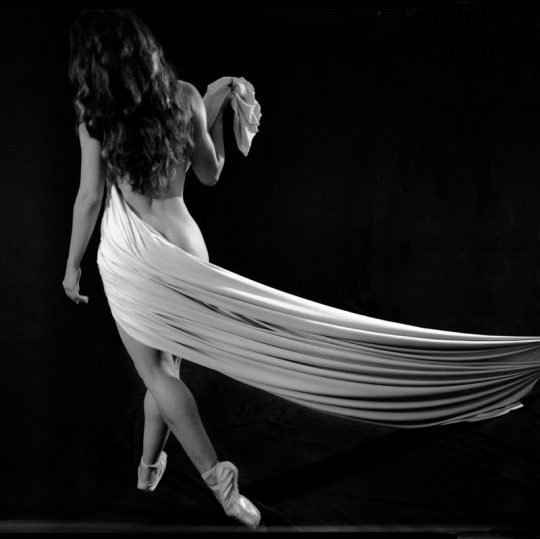
Danse nu, Nikon F6 Foma100
#eric cucchi#bw photography#photography#analog photography#black and white#analog#nu#danse#dance#foma
41 notes
·
View notes
Text
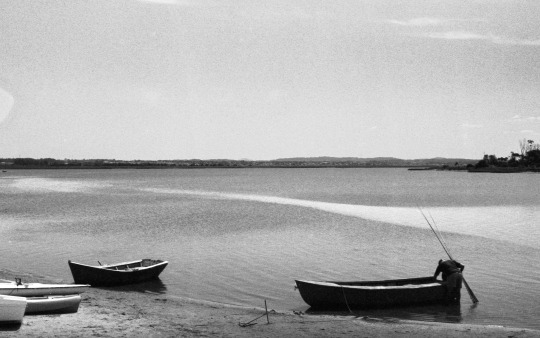
#arroyomaldonado#punta#puntadeleste#uruguay#filmhptography#filmisnotdead#shotonfilm#foma#fomapan#fomapan400#pentax#pentaxsuperprogram#smcpentaxa50mmf1.7#blackandwhite#monochrome
7 notes
·
View notes
Photo
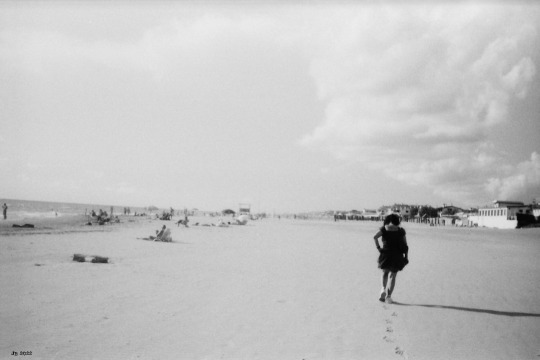
Footsteps in the sand
September beach, Ardea, Lazio, Italy. Konica C35 on Fomapan 100 B&W film.
#beach#melancholy#footsteps in the sand#photographers on tumblr#luxlit#black and white#analog photography#35 mm#film photography#seaside#mediterranean#sky#clouds#i still shoot film#film is alive#staybrokeshootfilm#original photographers#konica#Foma
155 notes
·
View notes
Text







刀剣乱舞
髭切 鴨人
15 June 2023
Photograph / Na
#Touken Ranbu#刀剣乱舞#Higekiri#髭切#cosplay#コスプレ#コスプレ写真#film photography#35mm film#black and white film#Nikon#Nikomat FTN#Nikkormat FTN#Nikkor 50mm f1.4#Adox#Adox HR-50#Foma#Fomapan 100#portrait
12 notes
·
View notes
Text


Ferns and Webs
Pentax K1000, Helios-44M-4 f2/58mm
Fomapan 100, Rodinal 1:50
#35mm#analog#film photography#swirly bokeh#helios 44#pentax k 1000#fomapan#foma#rodinal#nature#ferns#spider web#black and white film#bnw film#nature photography#explore nature#original photographers#blu27nature
14 notes
·
View notes
Text
Saimir Kristo: Architecture Is The Means To Create A Common Language Of Living
Weltraum, a radio podcast about space on the jabbering Independent Coastal Radio NOR hosted Saimir Kristo ... I had this great opportunity to talk about the city, his ideals and thoughts.

Saimir Kristo | Photo © Kristiana Meço
How Tirana changed in last 20 years?
Saimir Kristo: Talking about the weather it was much more rainy. It used to be the rainy city in Albania twenty years ago, when I come back from Greece. It changed radically. In 2004 there were not even proper bars. Of course nobody cared about the bars in that time, the country was just going out of a difficult period from the civil war in 1997, where pyramid schemes tricked citizens and took away their money. Fifteen years ago I am not really sure if we were not able to escape from this closed territorial system but today is the other problem, that people are leaving, there are massive emigrations. The problem I face as an individual but also as an architect in the last twenty years working in remote areas of Albania.
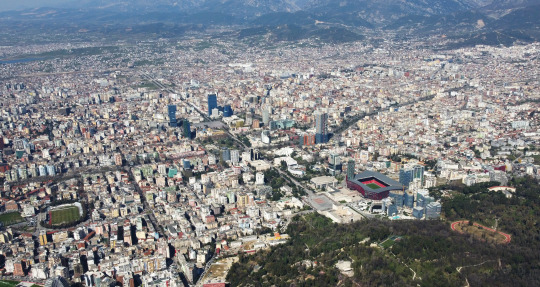
Tirana Aerial View | Photo © Open House Tirana
When I come back there was this amazing energy where people from Albania want to change the country, they wanted to go out from those enclaves from the past. There were many cases of informality in the 1990s, many cases of wild development, but there were people with the amazing energy. Whenever we have problems and we have the energy, we can always solve all problems because we have people around to solve it together. What about if you have depth and you go to the rural areas of Albania? Those villages were very much present in the landscape of the county but today are almost empty. Villages of once 1.000 inhabitants have now only thirteen people.
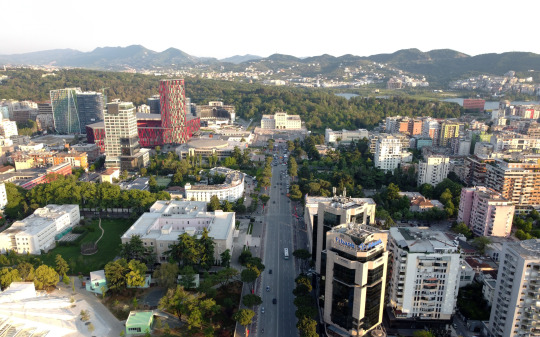
Tirana New Boulevard | Photo © Open House Tirana
The intention to move into big urban centres in the 1990s was very huge, it was a huge mass immigration. Today it's starting again. When I moved to Tirana there was just almost a half of a million people, reaching today a number of one million. So from 2,5 million Albanians that have left the county one million lives between Tirana and Durrës, the main port city. And we have 29.000 km2 of the territory. This is an important way to speak how Albania changed.
It is not always about architecture?
SK: I think is barely about the architecture. Architecture it is the means to justify, to camouflage, to improve and to manifest that people are much more sensitive about it. It is the means to deconstruct mentalities but also a means to educate to improve the settings and create a common language of living, of being. All these years of architecture in Albania, not as innovative approach because if was used in a part, is used in a way to transfer the identity of the city. I have a very famous image in mind, in 1990 when the main Skanderberg square had only pedestrians, only one bus and one truck.

Skanderbeg Square during daytime.| Photo © Open House Tirana

Skanderbeg Square changes it's identity during the evening.| Photo © Open House Tirana
Architecture is the means to justify, to camouflage, to improve and to manifest that people are much more sensitive about it. It is the means to deconstruct mentalities but also a means to educate to improve the settings and create a common language of living, of being.
People were thinking we had a very organised square with the right amount of people (whatever that means), a public transport with one bus. What if we go back to this situation? That can be very dangerous, because the Skanderberg square didn't had cars because people didn't want to use cars but because no one have a car easily. People also didn't feel the square as a public space but a main space for demonstration of the propaganda of the authoritarian regime of Hoxha. In the same way are the public spaces today, they might seem more contemporary organised but they are made only for events, either a political meeting, music concert or sports gather.
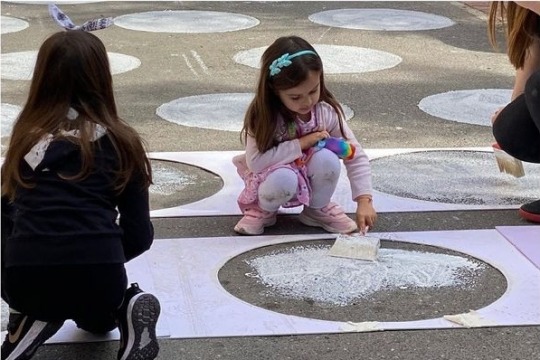
Urban Streetscapes: Filter Caffee Filtre | Photo © Tirana Architecture Triennial
The real life in squares makes them lively after midnight or early morning, where there is no urgency to be there but just a pure pleasure or desire. Architecture was and it still used to express political dominance and authority. To have a beautiful architecture we have to present it and experiment. I don't like the word educate, I think to have this relationship of co-ownership of projects that people really want.
The real life in squares makes them lively after midnight or early morning, where there is no urgency to be there but just a pure pleasure or desire.
As an educator you work in an educational institution, how is educational system about architecture in Albania functioning?
SK: It is situated on a dogma of the repetitive reproduction of something before, which is also linked to today, because students tend to limit their creativity because of the restrict educational system and their project doesn't resemble the project of their professors. This is a problem of us, educators. We have to change that. We continue to teach students what we were thought twenty, thirty years ago. We need to transform radically they way we do it. We shall focus on the importance of reading, going in depth of students ideas and expressions. Then students can find right tools to express better. We always try to copy what is present as innovative. It is on us, professors to educate ourselves more, read more and listen more. This is the the problem of architects, they don't listen so much but tend to speak.
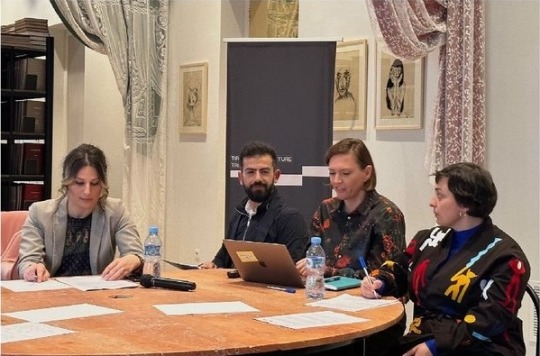
Roundtable Virtual or Physical; from left to right Etleva Dobjani, Saimir Kristo, Dijana Vučinić, Tinatin Gurgenize. | Photo © Tirana Architecture Triennial
The other topic, which I am very critical about, is the issue of non payed work. This has became a standard. We teach students to be aware of how much they need to be payed to be able to value their work. These are things that were never talked before in the auditorium.
Maybe LINA is the good opportunity for that; what did LINA created for Bartleti?
SK: Some of our LINA fellows presented the issue of inclusivity and education, which makes me very proud of. For Bartleti LINA collaboration makes a very important presence for bringing fresh ideas from incredible fellows with a high level of integrity and professionalism. On the other side this enhanced courage to our students to work with these topics and collaborate with the others. It is a case of asking question in a classroom and feeling a prejudice why are you asking this question. If you see other people having the same question, the you are part of the community. The other important issue is a continuous collaboration with other institutions that are part of LINA. I always have called this more that European union of architecture, because it extends beyond Europe.

Space Saloon + The MAAK | Photo © Tirana Architecture Triennial
International collaboration can not only be used as a mean to justify but can also be used as a means to go further, to look beyond and investigate a very delicate problem. Last year we had an opportunity to host New South with the issue of Sacred grounds.

Sacred Grounds by New South. | Photo © Tirana Architecture Triennial
We have this phenomenon of reduced co-existance in Albania. We have four different religions, which all cohabitate together. This is because our dictator abroad the religion in the 1960s, so when there was no religion, they need to find a common language to keep their faith inside them. In the New South's installation in the National historic museum, the most dictatorial building in Albania, presented all these four religion and in such way created a non physical temple for people of all these four religions inside an extra dogmatic building. We try to touch not only the build aspect but also how we perceive the space.
What kind of act is the demolishment of the National Theatre of Albania that happened few years ago?
SK: The demolition of the National Theatre was a collective act. It was not just an act to build a new theatre. It is not only an act by the government to transform a public space, get read of the old building or neglect it' s value. I think it's an act of us as architects, us as citizens of Tirana, not to raise the attention to all other historical buildings that have been left to the mercy of time since thirty years now. It is something we need to reflect in our consciousness. We might not have the money to restore the building, as culture is the smallest portfolio in our government. We have to ask for more. Demolitions is not something sporadic, that happened with the theatre, this is happening with hundred of historical buildings in Tirana and all around Albania. (Saimir presented the Forgotten Masterpieces of Albania in some of our previous talks).
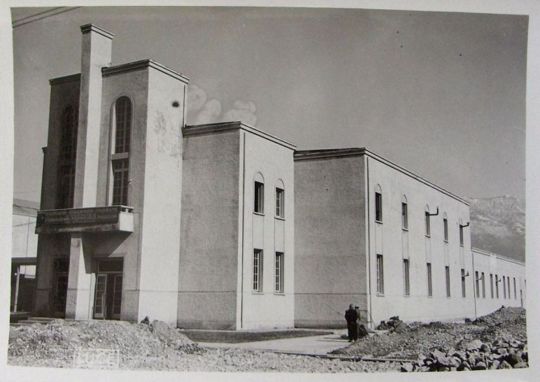
The National Theatre in Tirana. | Photo via Architectuul
We are always there in the last moment, when we know that there is one percent of chance to save it. We should emphasise the importance of thesis buildings and find a way to restore them. The city from twenty years ago it's not recognisable today. This is telling a lot about us, because to rebuild and restore takes a lot more time to discuss and work on that. In many levels the case of theatre is a consume story but it's also an inflation of our society and at the end you have one more building less to admire. The 17th of May 2020 at 4:30 in the morning, that's when the theatre collapsed, should not be the moment to ask the old theatre to be rebuild again in the place of the old one, but should be a moment to commemorate how neglected we were as a society and how important is to turn the attention on the city that we are taking advantage of.

Northern Boulevard Extension | Photo © Open House Tirana
The memory of the city is always important and we need to be able to pass over the memory of the story of the historical theatre to the next generations and not to romanticise the idilic idea of a new theatre by BIG. It is important of how to show the identity of our city.
How do you see architecture in the future?
SK: Beautiful! Why not! I am not part of the dramatic and pessimist discussions that architecture and our cities are getting worse. We have students that are not compromising themselves and they want to do a change. I want to Wellcome all the changes to see myself as a part of this evolving system. With new students working in the field of architecture we just have a bright future. What we need is to embrace all these things to feel them. We have to open our minds and to wake up. We have to keep the dream of our inner small Chile inside and working in architectural education we are responsible to keep that dream of all these young students alive and we have to foster it.

The National Theatre of Albania was demolished on 17. May 2020 at 4am. | Photo © Saimir Kristo
Saimir Kristo, P.hD. is an architect and urban designer, currently Deputy Dean and Lecturer at the Faculty of Applied Sciences and Creative Industries at BARLETI University. Founder of Tirana Architecture Triennale - Architecture Fund in Albania and Open House Tirana. He is an APLS Alumnus invited by the Austrian Ministry of Foreign Affairs and IVLP Alumnus invited by the US State Department representing civil society in Albania. As an active member of civil society, he is engaging communities to develop a common educational platform in the field of architecture and urban planning. His professional practice IXI Architecture is working in tangible and intangible mediums to transform urban design and architecture in Albania for the better. He holds a Ph.D. in Architecture and Urban Planning Focused on city morphology and urban catalysis and their role in the transformation of public spaces, a research result of his experience as a project leader in Urban Regulatory Plans in Albania. His scientific activity extends with monographs and publications but also as a jury member in international competitions. He serves as the Independent Nominator for the “EU Mies van der Rohe Award” appointed by the Fundacio Mies van der Rohe for Albania. Since its establishment, he has been a board member of "Fundjavë Ndryshe" foundation.
Here You can listen to the WELTRAUM interview.

2 notes
·
View notes
